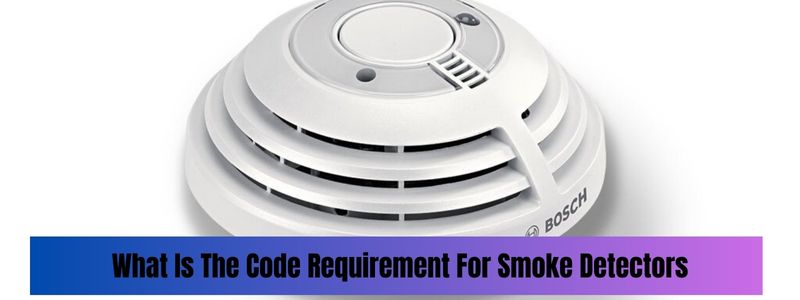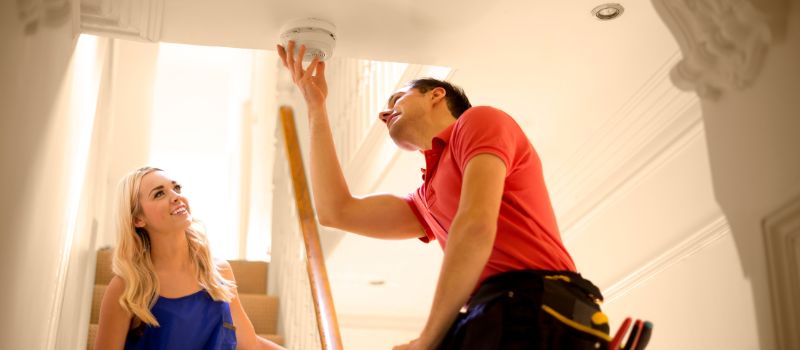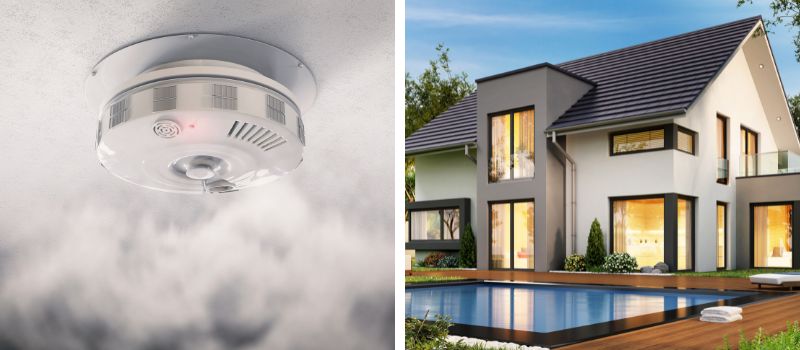When it comes to fire safety, smoke detectors play a pivotal role in safeguarding lives and property. Having the right number of smoke detectors installed in your home or commercial space is crucial to detect early signs of fire and promptly alert occupants. In this article, we’ll explore the recommended guidelines for the number of smoke detectors per square foot, ensuring optimal coverage and enhanced safety.
How Many Smoke Detectors Per Square Foot?
Hey there! When it comes to smoke detectors per square foot, the National Fire Protection Association (NFPA) recommends having a coverage area of around 1,385 square feet per smoke alarm. So, you’re looking at one smoke detector for that much space. Keep it within a 30-foot distance between them for quick detection.
Determining the Ideal Number of Smoke Detectors
The number of smoke detectors needed per square foot depends on various factors, including the size and layout of the space, potential fire hazards, and the recommendations of safety authorities. Here are some guidelines to help you calculate the appropriate number:
1. Consider the Size of the Space
As a general rule, at least one smoke detector should be installed on each level of your home. Additionally, place detectors in each bedroom and outside sleeping areas. In sizable rooms, such as living rooms or open-plan areas, it’s advisable to have more than one detector to cover the entire space effectively.
2. Account for Potential Fire Hazards
Areas with a higher risk of fire, such as kitchens, laundry rooms, and workshops, may require additional detectors. Kitchens, for example, are prone to cooking-related fires, so it’s essential to place a smoke detector nearby but away from cooking appliances to minimize false alarms.
3. Follow Local Building Codes and Recommendations
Local building codes and safety organizations, such as the National Fire Protection Association (NFPA) and the U.S. Fire Administration (USFA), often provide specific guidelines on smoke detector placement. Be sure to consult these resources to ensure you meet the minimum requirements for your region.
Quick Reference Table: Recommended Number of Smoke Detectors
| Area | Recommended Number of Smoke Detectors |
|---|---|
| One-Story Home | At least one per level |
| Multi-Story Home | At least one per level, plus bedrooms |
| Bedrooms | One for each bedroom and outside sleeping areas |
| Large Rooms (Living Rooms, Open-Plan Areas) | More than one, based on room size and layout |
| High Fire Risk Areas (Kitchen, Workshop, etc.) | At least one, with consideration for potential hazards |
The Significance of Proper Placement and Coverage
Installing the right number of smoke detectors in your living or working space is essential for several compelling reasons:
- Early Detection Saves Lives: Smoke detectors are the first line of defense against fires, offering an early warning that can mean the difference between life and death. By promptly detecting smoke, these devices provide valuable seconds to evacuate, reducing the risk of injuries and fatalities.
- Faster Emergency Response: With multiple detectors placed strategically, you can pinpoint the location of a fire more accurately. This information aids emergency responders in reaching the affected area faster and containing the fire before it spreads further.
- Compliance with Safety Regulations: Building codes and safety regulations often dictate the minimum number of smoke detectors required per square foot. By adhering to these guidelines, you not only prioritize safety but also ensure compliance with legal requirements.
- Extended Coverage for Large Spaces: In larger homes or commercial properties, a single smoke detector might not be sufficient to cover the entire area effectively. Proper placement and an adequate number of detectors guarantee comprehensive coverage.
FAQs
How often should I test my smoke detectors?
Test your smoke detectors once a month to ensure they are in proper working condition.
What should I do if my smoke detector keeps beeping?
A beeping sound may indicate a low battery. Replace the battery immediately and test the detector.
Can smoke detectors detect carbon monoxide (CO)?
Standard smoke detectors cannot detect CO. You need a separate carbon monoxide detector for that purpose.
Do I need a smoke detector in my garage?
Yes, installing a smoke detector in the garage is recommended, especially if it’s attached to the house.
Should I consider interconnected smoke detectors?
nterconnected smoke detectors offer enhanced safety as they all sound an alarm when one detects smoke, ensuring everyone is alerted regardless of their location.
Key Takeaway
Properly equipping your home or workplace with the right number of smoke detectors is crucial for maximizing safety. Early detection, faster response times, and compliance with regulations are all vital aspects of this consideration. Remember to take into account the size of the space, potential fire hazards, and recommendations from safety authorities to determine the ideal number of smoke detectors for your environment.

Edward’s expertise in smoke detectors is particularly noteworthy. He has conducted extensive research on the latest advancements in smoke detector technology and has worked closely with manufacturers to develop cutting-edge products that can detect fires more accurately and quickly.




